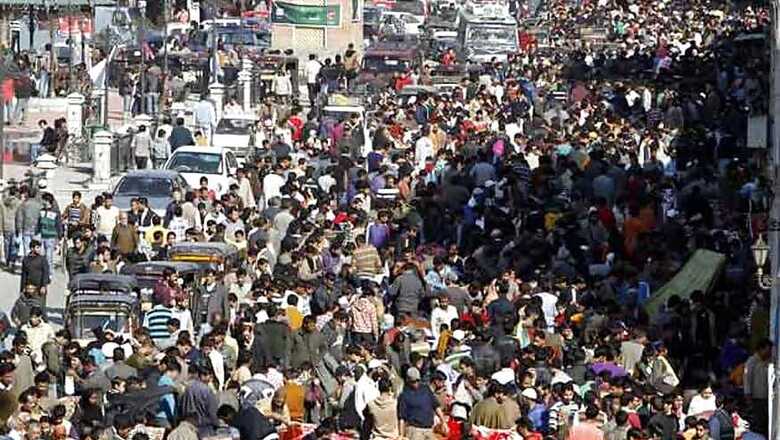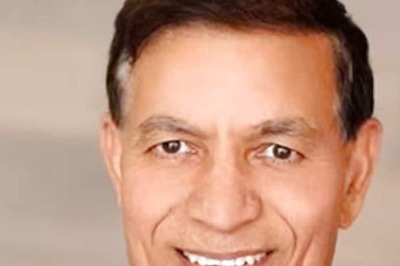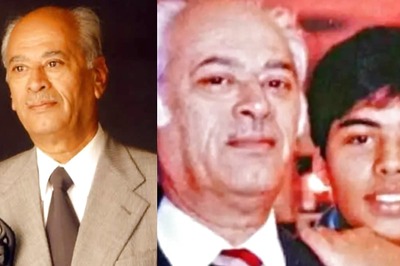
views
It was the 1960s, and India was facing an acute food scarcity. The opening scene of Stanford University professor Paul R Ehrlich’s 1968 book, The Population Bomb, paints a grim portrayal of a ride he and his family took on one of those days “in an ancient taxi, its seats hopping with fleas” through a teeming Delhi slum:
“The streets seemed alive with people. People eating, people washing, people sleeping. People visiting, people arguing and screaming. People thrust their hands through the taxi window, begging. People defecating and urinating. People clinging to busses. People herding animals. People, people, people, people. Since that night, I’ve known the horror of overpopulation. The battle to feed humanity is over, and humanity has lost.”
When Prime Minister Narendra Modi addressed the issue of population explosion in his Independence Day speech this August 15, he reignited a debate which, though has long been part of social discourse in the country, hadn’t been encompassed in the political narrative in recent years. The nation is once more in the grip of a deepening financial crisis. And a United Nations report in June said India, currently with a population of about 1.37 billion, will overtake China, with 1.43 billion people right now, as the world’s most populous country around 2027.
While the prime minister may not have explicitly hinted at one during his speech, analysts have been speculating for some time about a Population Control Bill from the Bharatiya Janata Party-led government at the Centre, which took several bold decisions during the monsoon session of Parliament that concluded on August 10, including stripping the state of Jammu and Kashmir of its constitutionally- provisioned special status and reorganising it into two union territories.
However, even if the government looks to put in place measures for population control, it will only be one of several state attempts made in the past.
Early attempts at family planning in India
The very first government initiative aimed at population control in independent India came as early as in 1951 when it became the first developing country to introduce a state-sponsored family planning scheme, simply called the National Family Planning Programme. The primary goal of the plan, which became the largest government-backed family planning project in the world during the 1960s, was to lower fertility rates and population growth in the new republic.
At this time, the population of India was 36.1 crore, according to Census data, with an annual growth rate of just 1.25 per cent in the preceding decade of 1941-51. The fertility rate was 5.9 lifetime births per woman for the 1950-55 period based on United Nations estimates.
As the programme ran for over two decades, India’s fertility rate dropped to 4.97 per cent while the population growth rate rose to 2.22 per cent for the decade of 1971-81. The number of people nearly doubled to 68.33 crore in the 1981 Census.
From the mid-1960s, the government had moved towards method-specific family planning, where state targets were set by respective state governments – primarily sterilisation/vasectomy – and these were pursued at the local level [Visaria, Jeejeebhoy, & Merrick, 1999]. The change included the renaming of the Ministry of Public Health to Ministry of Public Health and Family Planning: it now had a dedicated department on family planning.
The infamous coercive campaign by the Indira Gandhi-led government during the Emergency between 1975 and 1977 when over eight million sterilisations were performed – mostly on men – became the most-recalled episode in state-sponsored method-specific family planning measures in the country. The prime minister’s son, Sanjay Gandhi, was at the forefront of this gruesome drive with reports of police cordoning off villages and virtually dragging the men to surgery.
As an added measure to curb population growth, Parliament passed the Medical Termination of Pregnancy Act in 1971 that legalised abortion. Consequently, some 23,000 abortions were performed annually from 1972-73 [Harkavy and Roy, 2007]. In 1972, the government set-up the Family Planning Foundation to fund research on birth control.
After 1977, the foundation and other associated departments were merged to form the new Ministry of Health and Family Welfare, and sterilisation targets were sharply reduced [Harkavy and Roy, 2007]. In effect, the programme moved from aiming at lowering fertility to promoting reproductive education among the masses.
Change in approach
With the acceptance of its failure to achieve family planning goals in the 8th five-year plan in 1992, the government completely abolished method-specific family planning throughout the country in 1996. It shifted to a more comprehensive approach which focused on healthcare services, education and a relaxation of family planning measures, allowing people the liberty to choose their own methods [Visaria, Jeejeebhoy & Merrick, 1999].
In October 1997, the Reproductive and Child Health (RCH) Programme was started which removed family planning targets and incentives to those who used birth control methods.
As a result of the re-orientation in approach towards population control, fertility rates fell significantly from 4.68 in the early 1980s to 3.48 lifetime births by the end of the 20th century. The population growth rate during the same time declined to 1.97 per cent against the global rate (UN estimates) of 1.34 per cent.
Under the United Progressive Alliance (UPA) rule, between 2004 and 2014, the state continued with the idea of ‘voluntary’ family planning with initiatives focused at aiding the methods adopted by households including availability of condom dispensers at public health centres and home delivery of contraceptives by ASHA (Accredited Social Health Activist) workers, among others.
Additionally, it set up a Jansankhya Sthirata Kosh (National Population Stabilisation Fund) in 2004-05 with a one-time grant of Rs 100 crore in the form of a corpus fund. JSK was established as an autonomous body under the Societies Registration Act, 1860 and can take all policy-related decisions.
Programmes such as the Santushti scheme were launched in which the JSK would invite private-sector gynaecologists and vasectomy surgeons to conduct sterilisation operations in public-private partnership with target-based incentives involved. Santushti covered relatively more populated states such as Uttar Pradesh, Bihar, Madhya Pradesh, Jharkhand, Chhattisgarh and Odisha and a total of 20,184 sterilisations were performed under it between 2010-11 and 2013-14 with an expenditure of Rs 1.53 crore.
Another programme named Prerna, which covered the same states, motivated people through incentives to push up the age of marriage of women and space the birth of children in the interest of the health of young mothers and infants.
Whether due to government measures or relatively enhanced knowledge among the populace and access to contraception, population growth between 2001 and 2011 fell to 1.64 per cent. Fertility rates, for which more recent data is available, have come down to 2.2 according to the latest round of the National Family Health Survey (2015-16) which is marginally higher than the replacement level fertility of 2.1 lifetime births per woman. Replacement level fertility is the total fertility rate at which a population exactly replaces itself from one generation to the next, without migration.
Fertility in several states has fallen below the replacement level while it remains high in a couple of others. For instance, while the fertility rate in Punjab, Himachal Pradesh, West Bengal, Sikkim, Tripura, Maharashtra, Goa, and all the south Indian states has gone below 2.0 lifetime births, it remains over 3.0 in Meghalaya and Bihar.
Use of contraceptives and public campaigns
In the 1950s and 60s, the foremost public campaign to encourage family planning was the ‘inverted red triangle and four faces’. An upturned red equilateral triangle would be painted on billboards and walls with a yellow background. The triangle was often accompanied by messages such as “Have only two or three children...that’s enough” or “Two or three children, then stop”, and faces of a father, mother, son and daughter.
However, with little reduction in population growth and fertility, the message changed to “Hum Do, Humare Do” by the 70s, asking parents to have just two children.
Among methods of contraception, condoms, intrauterine devices (IUDs) and sterilisation remained the major modes of family planning. Official data on contraceptive use during the early years of family planning is not available. However, a 1970 study estimated that nationally about 13.6 per cent of couples had adopted family planning and 9.7 per cent of these used methods covered under the official programme.
At present, the knowledge of contraceptive methods is “universal in India” (99 per cent), according to the NFHS-4 (2015-16) report. However, only about half (48.5 per cent) of currently married women use a modern contraceptive method. This number has remained almost unchanged since the previous survey in 2005-06 when it was 47.7 per cent. On the other hand, only one in every five men (age 15-54) uses a modern contraceptive method.
Future prospects
According to the 2019 revision of the UN World Population Prospects, fertility rates in India would fall to 1.82 by 2050, way below the global rate of 2.21. Similarly, India’s population growth rate is expected to further decline to 0.23 per cent by 2045-50 and eventually turn negative from 2060 onwards.
But, also by 2060, India would be holding a population of 165 crore (roughly 16.2 per cent of the global population) and would remain the most populous country till the end of this century. For context, China at the same time would have about 133 crore people (13.1 per cent of the world population).
“Today, from the ramparts of the Red Fort, I want to address the issue of population explosion in the country. Parents in India now need to give a serious thought to whether they will be able to fulfill their child's dreams and aspirations and support a new life,” Prime Minister Modi said in his latest Independence Day speech, stressing the need to push for family planning. And if population estimates are anything to go by, the country has its task cut out.




















Comments
0 comment